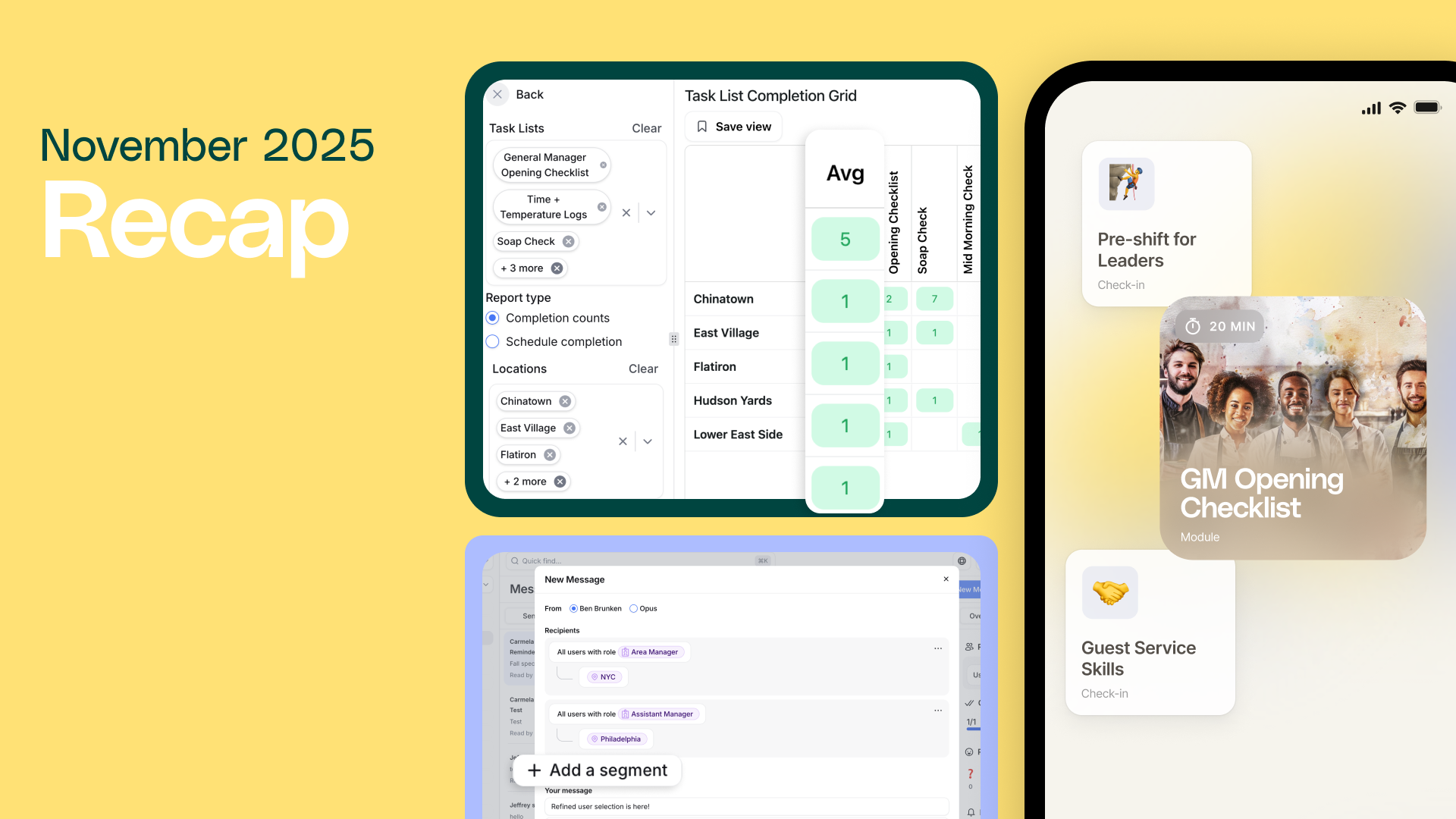Gathering reliable data on the state of restaurant training can often feel like searching for a hidden ingredient. While learning & development (L&D) and operations teams recognize the critical importance of effective onboarding and continuous skill development, concrete benchmarks have historically been elusive.
Recognizing this challenge, the Hospitality Training 360 Report from Opus, in partnership with CHART, delves into various aspects of the training sector, including those hard-to-pin-down training metrics.
From declining new hire training hours to the average cost to train an employee, we’ve presented the key statistics gleaned from this year’s report, offering a data-driven snapshot of the current state of training practices in the restaurant industry.
The Hospitality Training 360 Report Survey Data, Explained
These insights are drawn from the responses to specific survey questions that fueled the final report. The survey specifically asked about key training metrics, allowing participants to share details about their current practices. For instance, questions focused on the typical number of hours allocated for new hire training across different roles and operational models, and the ongoing investment in employee development.
It's worth noting that these statistics are based on the responses from over 100 L&D leaders representing more than 40,000 locations who answered the relevant training questions. Each table represents the number of businesses that responded to each survey question.
Key Restaurant Training Statistics & Benchmarks
New Hire Training: Average Training Hours by Role
New Hire Training: QSR vs. Full-Service Restaurants
Ongoing Training: Average Continued Training Hours
Ongoing Training: QSR vs. Full-Service Restaurant
Training Costs: Average Cost Per Employee
Training Costs: QSR vs. Full-Service Restaurant
Interpreting Your Training Metrics
It's natural to wonder how your organization's training investments stack up against industry averages. If the survey data reveals that your spending or training hours are significantly higher or lower than the benchmark, resist the urge to immediately sound the alarm.
Deviations from the average aren't inherently negative; they simply reflect the unique circumstances of your business. Factors like your specific service model, the complexity of your menu or operations, your commitment to customer service, and even your geographic location can all influence training needs and costs. The key is to understand why your metrics differ and whether those differences are aligned with your strategic goals.
In some cases, lower-than-average training hours can actually be a sign of strength. The hospitality industry is constantly evolving, and training methodologies are becoming increasingly efficient. If your team has embraced innovative approaches, such as microlearning, gamification, or blended learning strategies, you may be able to achieve the same or even better training outcomes in a fraction of the time compared to traditional methods.
Empower Your Training with Data-Driven Insights from Opus
The Hospitality Training 360 Report offers a unique view for navigating the ever-evolving restaurant training landscape. Learning today’s key metrics, like average training duration and costs, empowers L&D and operations teams to contextualize their own efforts and identify areas to grow and innovate their programs.
Ultimately, understanding these industry averages isn't about blindly adhering to them, it’s about leveraging them to inform and optimize your own unique training strategies. For organizations seeking to not only deliver impactful training but also to gain a clear and measurable understanding of their efficiency, Opus Training offers powerful reporting capabilities to take your team to the next level.
By tracking metrics like time-to-completion and actual time spent on e-learning, L&D teams can fine-tune their programs, maximize resource allocation, and ultimately drive better business outcomes. Ready to unlock the power of data-driven training? Book a demo with Opus today.


.jpg)



